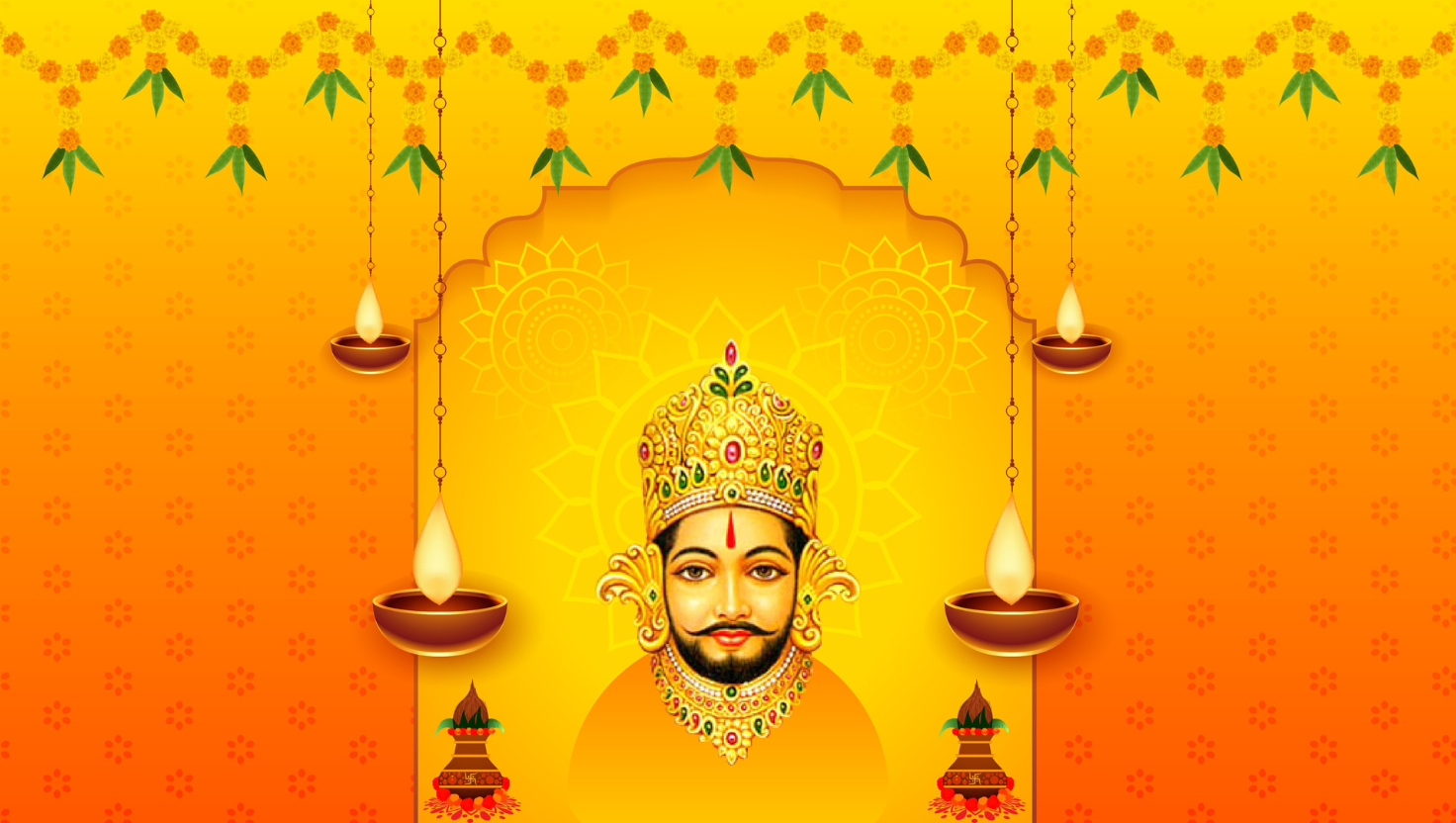Why Devotees Celebrate Khatu Shyam Ji’s Birthday
Khatu Shyam Ji’s birthday (janmotsav) is a powerful day of devotion, sacrifice, and blessings. This blog explains who Khatu Shyam Ji is, why his birthday is celebrated, how devotees celebrate it, and how you can observe it at home.
Who is Khatu Shyam Ji?
Khatu Shyam Ji is widely revered as the divine form of Barbarik, the grandson of Bhima from the Mahabharata. Barbarik was blessed with extraordinary martial prowess and devotion. Lord Krishna tested him and—moved by his devotion and sacrifice—gave him the name Shyam (a name of Krishna). Krishna blessed Barbarik that in Kalyuga he would be worshipped in His name and would bless devotees who worship with a true heart. This is why Khatu Shyam Ji is known as the “Daatā Shyam”—the fulfiller of wishes.
Why Khatu Shyam Ji’s Birthday is Celebrated
The birthday (janmotsav) honors Barbarik’s divine birth and the blessings he received from Lord Krishna. Devotees celebrate because they believe:
- The day carries special spiritual energy.
- Prayers and wishes offered on this day are more likely to be fulfilled.
- The occasion helps remove difficulties, sorrow, and burdens of karma.
- It brings blessings of courage, strength, and success.
At its heart, the festival recalls the ideals of sacrifice, courage, devotion, and compassion.
When and Where
Khatu Shyam Ji’s janmotsav is generally celebrated in the Hindu month of Phalgun (February–March), often a few days before the grand Khatu Shyam Mela. The principal place of celebration is the Khatu Dham Temple in Sikar district, Rajasthan, which draws lakhs of pilgrims every year.
How the Birthday is Celebrated
The celebrations are marked by devotion, music, ritual, and communal service. Common elements include:
1. Mangla Aarti and Special Darshan
Early morning rituals begin with Mangla Aarti, special shringar, and the divine darshan of Shyam Baba adorned with flowers, jewelry, and colorful turbans. The atmosphere during aarti is charged and devotional.
2. Grand Processions (Shobha Yatras)
Devotees organize processions featuring drums, bhajans, floral decorations, and chanting. Streets and paths to the temple fill with people singing and celebrating joyfully.
3. Bhajan, Kirtan, and Cultural Programs
Bhajan singers and kirtan mandalis perform devotional songs, Rasleela dances, and group chanting. The devotional music often leads devotees into ecstatic singing and dancing.
4. Bhandara (Community Feast)
Large-scale free meals (bhandaras) are served to thousands of devotees—prasad, halwa, puri, kheer, and lassi are common. The spirit of seva (service) is central to the celebration.
5. Kesariya Flag Hoisting
A saffron (kesariya) flag is hoisted as a symbol of protection and blessings. This ritual is considered highly auspicious.
6. Offerings and Prasad
Devotees offer churma, kesar-mishri, sweets, flowers, coconuts, and sometimes a new lehenga or pagdi for the deity. Each offering is an expression of gratitude and devotion.
7. Deep Yagya and Maha Aarti
Evening ceremonies often include large numbers of lamps lit across the temple complex. The sight of thousands of diyas glowing together is deeply moving and symbolic of inner light.
Spiritual Significance
Khatu Shyam Ji’s birthday represents several deep meanings:
- Sacrifice: Barbarik’s willingness to give everything for dharma mirrors extreme devotion.
- Courage: His bravery and unparalleled ability symbolize inner strength.
- Devotion: His pure love for Krishna teaches unconditional surrender.
- Blessings: Krishna’s boon made him the wish-fulfilling deity for Kalyuga.
- Unity: People from all walks of life come together at Khatu Dham, reflecting unity across social divides.
How to Celebrate at Home
If you cannot visit Khatu Dham, you can still honor Khatu Shyam Ji’s birthday at home with simple, sincere acts:
- Decorate your home altar with fresh flowers.
- Perform morning and evening aarti with devotion.
- Offer churma, halwa, sweets, or fruits as prasad.
- Sing Shyam bhajans or play recorded bhajans and kirtan.
- Light 11 or 21 diyas in the evening to symbolize light and devotion.
- Donate food, clothes, or sweets to people in need as an act of seva.
- Read the Khatu Shyam Chalisa or recite prayers with a sincere heart.
Remember: genuine devotion and simplicity matter more than grandeur. A pure heart is the truest offering to Baba Shyam.
Conclusion
Khatu Shyam Ji’s birthday is an emotionally rich and spiritually uplifting celebration. It brings devotees peace, strength, and a renewed sense of faith. Whether at Khatu Dham or in the quiet of your home, the janmotsav invites us to remember the virtues of sacrifice, courage, and unconditional devotion. Celebrate with love—and you may feel Baba Shyam’s blessings in many ways.
Jai Shri Shyam! May the blessings of Baba Shyam always be with you.

